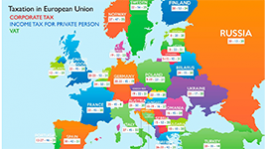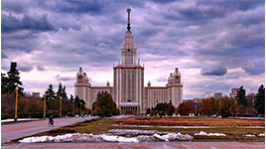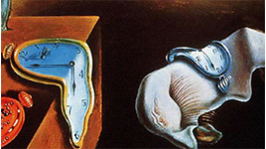Неэргодическая экономика
Авторский аналитический Интернет-журнал
Изучение широкого спектра проблем экономики
На английском языке
The goal of the article is to evaluate different projects of reforming the income tax in the Russian Federation. To carry out this evaluation, the authors developed a three-parameter model which makes it possible to do calculations of the expected effects from different tax reform scenarios. The model is based on the idea that the best reform project simultaneously reduces the assets ratio, increases budgetary revenue and does not pose any risk of the reform’s non–fulfillment. The information array of the research is statistical data on the population’s income distribution. To neutralize distortions, the authors calibrated initial statistical data on distribution in the high–income group (the tenth decile) of the population. The risk of non–fulfillment was assessed through an expert poll. The developed model was used to test four income tax reform projects: those developed by the Government of the Russian Federation, the Communist Party of the Russian Federation, the Liberal Democratic Party of Russia, and the Party “Just Russia”. The application of the model allowed the authors to determine that the best project, according to three parameters, in the project of the Government, which preserves the flat income scale and raises the rate from 13 to 15%. According to the authors, it shows that there are no rational alternative suggestions on the introduction of a progressive income tax scale. They have also found out that the projects of all the political parties that support the introduction of a progressive income tax scale in Russia dramatically overestimate the growth in tax revenues from the implementation of their suggestions due to incorrect calculations of the distribution of the population’s incomes in the tenth decile group. It is concluded that currently there is no consensus between the Russian opposition political parties and the expert community. This prevents them from working out a single and well–developed income tax reform project. The authors believe that at present Russia needs a balanced project of introducing a progressive income tax with multi–step corrections of this tax over an extended period of time (10 years or more).
16.05.2019
This article is dedicated to the struggle between major socioeconomic universities (SEUs) of Russia for leading positions in the higher education market. It is shown that only in Russia are SEUs, along with classical universities and technological institutes, the strongest players in the market of higher education establishments. The ranking data of the country’s higher schools of economics for 2013–2016 are given, which demonstrate the escalating competition between the most successful SEUs of Russia, manifested in regular “castling” between the higher education institutions in the top list ranking. The authors emphasize the importance of factors of competitive growth, such as the publication of leading economics journals, the creation of a network of scientific divisions in the structure of universities, the formation of an all–Russia information agenda on their territories, and the development of regional analytics centers.
25.02.2019
The focus of this article is the methodological understanding of time in the science of economics. According to the author, this concept has undergone great changes, and the construction of an adequate economic theory is impossible without the correct understanding of the time factor. However, the difficulty lies in the fact that time has a huge number of diverse hypostases.
21.02.2019
Ways of improving the legislative framework so as to treat the state sector as an autonomous element of the system of government regulation are considered. In the authors’ view, this should help lay down the analytical and statistical foundations of further interaction between the state and the state sector of the Russian economy. A number of organizational innovations that could promptly raise the effectiveness of the state sector are proposed on the basis of international experiences.
21.02.2019
A method for estimating the level of inflation vulnerability and inflation stability is proposed, based on the average operating cycle period. Sectoral niches that are the most exposed to price increases are identified and the role of nonpayments in distorting the real magnitude of inflation vulnerability of Russian industries is shown. The main idea of paper – the simple model of inflation tax and its role for economic growth.
21.02.2019
Trends in industry restructuring in relation to different forms of ownership and their effect on the rate of decline in industrial production are examined. The functioning of enterprises of different forms of ownership is subjected to a comparative analysis. The special attention is paid to differentiation of productivity of labor by type of ownership, as well as to the cycle «privatization–nationalization».
21.02.2019
Leisure is examined in the context of the so–called Walras law which plays a major part in economics. The author attempts to elaborate and extend the definition of this law to provide a deeper insight into functional characteristics of capitalism and socialism. It is shown that the divide between the two systems runs through the market of leisure, which shapes the genuine cast of an economic system.
20.02.2019
This follow–up on institutional change in Russia’s economy examines the development of state and nonstate sectors in the light of their scale and the effect of privatization on the efficiency of industrial production. Special attention is devoted to changes in subdivisions of industry and within the different property sectors. The author reveals the role of reflexive mechanisms in the destruction of the Russian public sector.
20.02.2019
The author of this paper considers that there are economic laws that lead to the «self–rupture» of a socioeconomic system and create objective prerequisites for its downfall. Society, however, is capable of overcoming critical stages in its development. The author attempts to analyze the potential it has at its command for neutralizing the tendency toward economic self–destruction.
20.02.2019
Trends in the work, size, and efficiency of economic units that are new to Russia are examined. Author is talking about such phenomena as small business, foreign companies and joint ventures in post–capitalist Russia. It is postulated that such a study can provide a basis for competent economic development forecasts and management decisions.
20.02.2019












